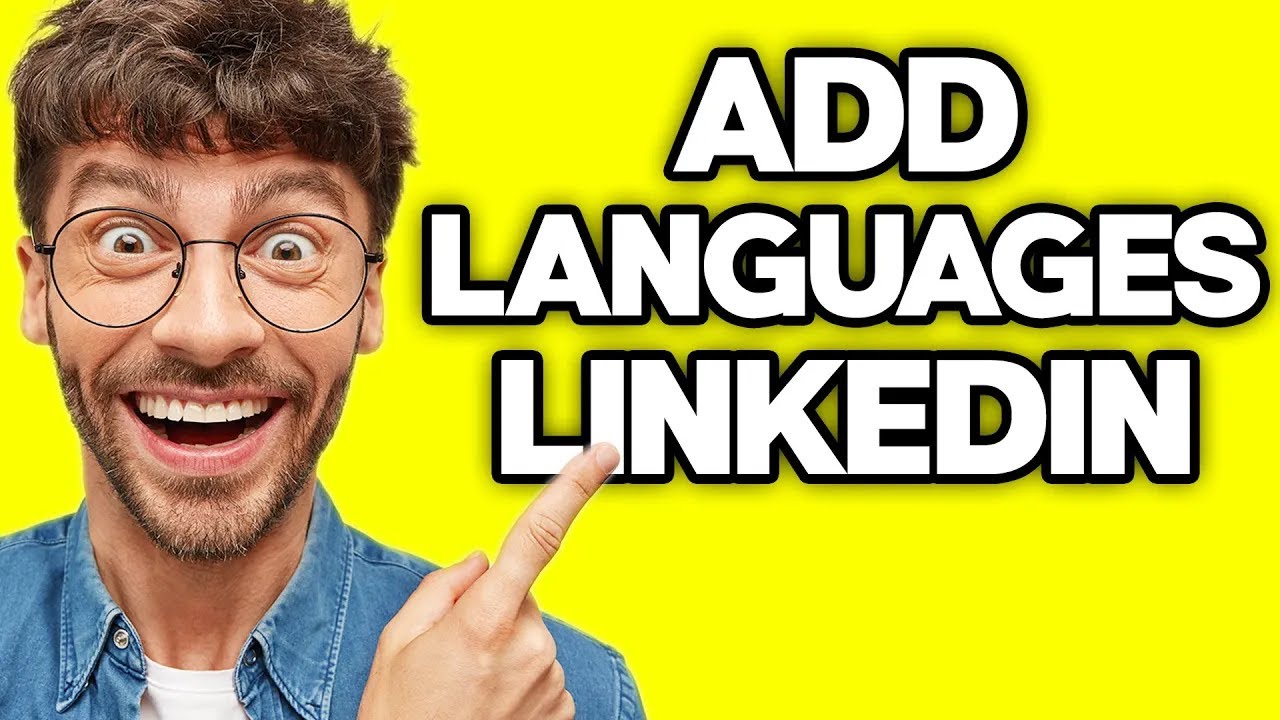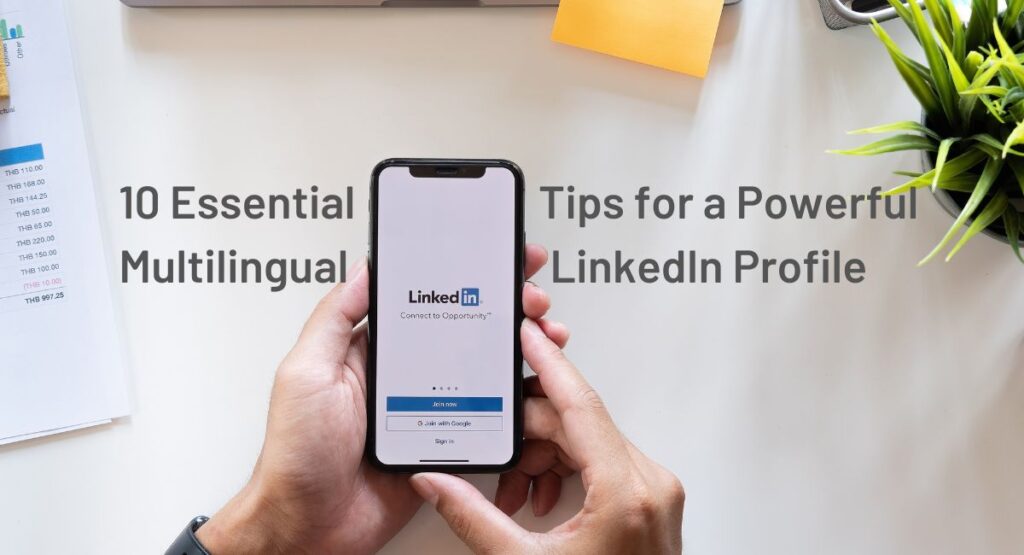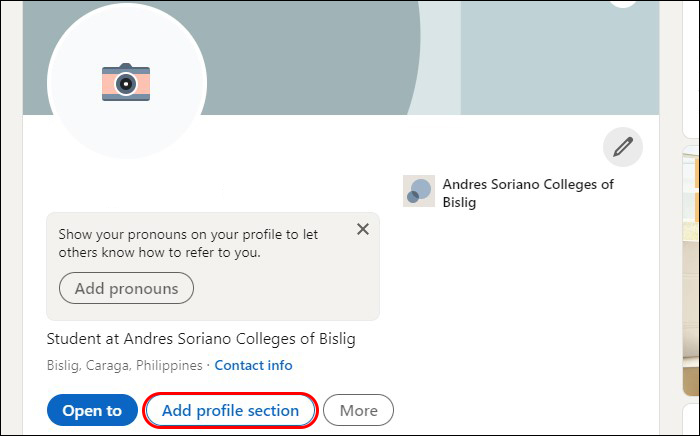In today's interconnected world, speaking multiple languages can open doors to new opportunities. LinkedIn, as a professional networking platform, provides the perfect space to showcase your linguistic skills. Adding languages to your profile not only enhances your visibility but also makes you attractive to potential employers. In this post, we'll explore simple tips to effectively add languages to your LinkedIn profile, helping you stand out from the crowd.
Why Adding Languages is Important for Your LinkedIn Profile

When it comes to enhancing your professional profile, displaying language skills can be a game-changer. Here are some compelling reasons why you should consider adding languages to your LinkedIn profile:
- Broader Networking Opportunities: LinkedIn connects you with professionals worldwide. By showcasing your language skills, you can tap into markets and networks that may otherwise be closed off. Companies value multicultural teams, and possessing language skills can be a bridge to establishing relationships across different regions.
- Increased Job Prospects: Many employers specifically look for candidates who can communicate in multiple languages. This is especially true for roles in customer service, sales, marketing, and global communication. Adding languages to your profile could make you the ideal candidate for jobs that require bilingual or multilingual abilities.
- Demonstrates Cultural Competence: Languages are a window into cultures. By listing your language skills, you signal to potential employers that you have an understanding of diverse cultures, which is a huge plus in today’s global market. It shows that you can navigate different cultures and foster meaningful relationships with clients and colleagues.
- Enhanced Credibility: Including language skills gives you an edge over others who may not, showcasing your versatility and adaptability. It demonstrates commitment to personal growth and a willingness to learn, traits that many employers find admirable.
- Attracts Attention from Recruiters: Recruiters often use specific keywords during their searches. By incorporating relevant languages into your profile, you increase the likelihood of appearing in searches for language-related positions or roles in companies that operate in multilingual environments.
- Networking with a Global Mindset: Connecting with others who speak the same language can lead to powerful collaborations. It can help you join professional groups and discussions that you might not have access to without those language skills, allowing you to expand your professional network even further.
Incorporating language skills into your LinkedIn profile is more than just a bonus; it’s a smart strategic move. It reflects not only your qualifications but also your adaptability and willingness to embrace diversity in the workplace. So if you speak more than one language, don’t hold back—highlight those skills and watch your LinkedIn profile shine!
Also Read This: How Many Photos Can You Post on LinkedIn at Once?
3. How to Add Languages to Your LinkedIn Profile

Adding languages to your LinkedIn profile is a straightforward process that can significantly enhance your professional appeal. It’s an effective way to showcase your multicultural skills and reach a broader audience. Here’s how to do it:
- Log into Your LinkedIn Account: Start by signing into your LinkedIn account. If you don’t have an account yet, creating one is quick and easy!
- Go to Your Profile: Click on your profile picture or the “Me” icon at the top right of your LinkedIn homepage. Then, select “View Profile.”
- Find the “Add profile section” Button: On your profile page, look for the “Add profile section” button positioned below your profile photo. Click on it.
- Select “Recommended”: Once you click this, you'll see a menu. Look for the “Recommended” category and select “Add languages.”
- Add a Language: In the new section that appears, type in the language you wish to add. LinkedIn will suggest options as you type. Make sure to choose the correct one!
- Indicate Your Proficiency: After entering the language, you’ll need to select your level of proficiency. LinkedIn offers three options:
- Basic proficiency
- Conversational proficiency
- Full professional proficiency
- Native or bilingual proficiency
- Save Your Changes: Once you’ve added all the languages and proficiency levels you want, be sure to click “Save.” This will ensure that your new language skills are visible on your profile.
Keep in mind that regularly updating your profile is essential to reflect your current skills and experiences accurately. If you learn a new language or improve your proficiency, don't hesitate to go back and update your profile!
Also Read This: Can You See Who Viewed Your LinkedIn Profile from Google?
4. Choosing the Right Languages to Showcase

When you're considering which languages to add to your LinkedIn profile, it’s not just about what you can speak but also about strategic choice. Here are some tips to help you select the languages that can maximize your appeal in today’s job market:
- Consider Industry Demand: Some industries have high demand for specific language skills. For example, if you work in finance, languages like Spanish or Mandarin can be advantageous.
- Target Your Geographic Location: If you're in an area with a diverse population or where certain languages are frequently spoken, including those languages can help you connect better with potential employers or clients.
- Look at Job Descriptions: Pay attention to the job postings in your field. If you notice recurring language requirements, those are definitely worth considering for your profile.
- Highlight Multilingual Skills: If you possess unique language skills that can set you apart—like less common languages or dialects—make sure to emphasize them! This shows you can engage with niche markets or clients.
- Personal Interests and Background: If a language is part of your cultural background or personal interest, showcasing it adds authenticity. It tells a story about you, which can resonate with employers.
Remember, quality trumps quantity. It’s better to confidently showcase a few languages you are proficient in rather than list numerous languages at varying levels of ability. Choose wisely, and you’ll create a LinkedIn profile that truly stands out!
Also Read This: How to Add LinkedIn to Your Outlook Account
5. Highlighting Language Proficiency Levels
When it comes to showcasing your language skills on LinkedIn, being specific about your proficiency levels is key. Prospective employers want to know not just what languages you speak, but how well you can communicate in them. Here’s how to effectively highlight your language proficiency:
Use Standard Proficiency Descriptors: LinkedIn allows you to indicate your proficiency level in different languages. Most professionals use the Common European Framework of Reference for Languages (CEFR), which categorizes proficiency into six levels:
- A1: Beginner
- A2: Elementary
- B1: Intermediate
- B2: Upper Intermediate
- C1: Advanced
- C2: Proficient
Being clear about your level can help employers understand your capabilities. If you're fluent, make sure to state it! Something as simple as “Fluent in Spanish (C1)” can catch the eye.
Be Honest: It's essential to portray your language skills accurately. Overstating your ability can lead to challenging situations, especially in professional settings. If you're at an intermediate level, it's okay to express that. Something like "Conversational Italian (B1)" sounds perfectly fine!
Utilize Examples: If you've used a language in a professional context, mention that experience. For example, “Conducted business negotiations in French at a C1 level” gives prospective employers context regarding your ability to use that language effectively.
Including your proficiency levels can help you stand out to employers looking for multilingual candidates. It demonstrates that you can not only speak the language but do so at a level that can be beneficial for the role you’re seeking.
Also Read This: How to Manage Job Alerts on LinkedIn: A Guide to Personalizing Job Notifications
6. Using Language Skills to Enhance Your Professional Branding
In our globalized world, being multilingual can significantly boost your professional branding. Here’s how you can leverage your language skills to create a stronger personal brand on LinkedIn:
Show Your Versatility: Are you working in a multicultural team? Do you have a customer base that speaks multiple languages? Highlight how your language skills have helped you connect with diverse audiences. For instance, “Enhanced customer relations by providing support in English and Mandarin.” This not only showcases your language proficiency but also your ability to adapt in a diverse work environment.
Connect with Global Opportunities: Potential employers are increasingly looking for candidates who can bridge gaps between cultures. By showcasing your language skills, you’re essentially advertising yourself as someone capable of navigating international business landscapes. For instance, you could write, “Fluent in German, enabling me to manage our European client accounts effectively.”
Include Certifications: If you have any language certifications, like the DELE for Spanish or DELF for French, don’t forget to include those on your profile. This adds credibility and can make your language skills stand out even more. Employers appreciate quantifiable skills, and certifications speak volumes!
Engage in Language-Related Content: Consider sharing articles or posting updates related to language learning or cultural insights. This not only positions you as a knowledgeable professional in your field but also reflects your passion for languages. Engaging with others in comments can also expand your network exponentially.
All in all, your language skills can be a powerful asset in enhancing your LinkedIn profile and professional branding. By effectively communicating these skills, you open yourself up to a world of opportunities that can take your career to new heights!
Also Read This: How to Search for and Connect with Past Employees on LinkedIn
7. Common Mistakes to Avoid When Adding Languages
Adding languages to your LinkedIn profile can boost your visibility and make you more attractive to potential employers or collaborators. However, there are some common pitfalls to avoid that can undermine your efforts. Here are the main mistakes to steer clear of:
- Overstating Proficiency: One of the biggest mistakes is claiming fluency in a language that you only know a few phrases in. Always be honest about your proficiency. LinkedIn provides a scale (e.g., Elementary, Limited Working, Professional Working, Full Professional, and Native or Bilingual) to help you categorize your skills accurately.
- Neglecting Context: It’s crucial to add context to your language skills. For example, if you’ve used a language in a professional setting or during your education, mention it. This not only validates your claim but also gives potential employers insight into how you’ve applied your language skills.
- Forgetting to Update: Languages can fade from use, and ongoing learning is paramount. If you haven’t spoken a language in years, it might not be fair to claim high proficiency. Regularly assess and update your skills as necessary.
- Ignoring the Audience: Think about your LinkedIn audience. If you’re in a field where bilingualism is crucial, make sure to highlight those skills prominently. Conversely, if languages aren’t relevant to your industry, focus on the abilities that matter most.
- Skipping Examples: While listing languages is a great start, consider adding specific examples of how you’ve used each language. Whether through work, travel, or personal projects, real-life applications not only make your profile more engaging but also showcase your capabilities.
- Omitting Cultural Understanding: Learning a language is often intertwined with understanding its culture. If you’ve studied cultural nuances or participated in related events, mention this on your profile. It shows depth and commitment that employers value.
- Inconsistent Formats: Finally, maintain a consistent format when listing languages. Use the same proficiency descriptions and layout for clarity. Inconsistencies can confuse viewers and can detract from the professionalism of your profile.
By avoiding these common mistakes, you not only strengthen your LinkedIn profile but also enhance your overall professional presence. Remember, authenticity and clarity are your best allies in showcasing your language skills.
8. Conclusion
In today’s increasingly globalized job market, being multilingual can set you apart from the competition. Adding languages to your LinkedIn profile is a smart strategy, but how you do it matters just as much as the languages themselves. By following the simple tips we’ve discussed—like choosing the right languages, being honest about your proficiency, and avoiding common pitfalls—you can create a compelling, standout profile that attracts the right attention.
Remember, your LinkedIn profile is your online professional persona, so take the time to ensure it reflects your skills accurately and authentically. With languages, it's not just about listing them—it's about demonstrating how they enhance your professional capabilities and contributions.
So, what are you waiting for? Take a moment to revisit your LinkedIn profile. Ensure your language skills shine through. With these tips, you’ll not only enhance your profile but also open up a world of opportunities. Happy networking!
 admin
admin








